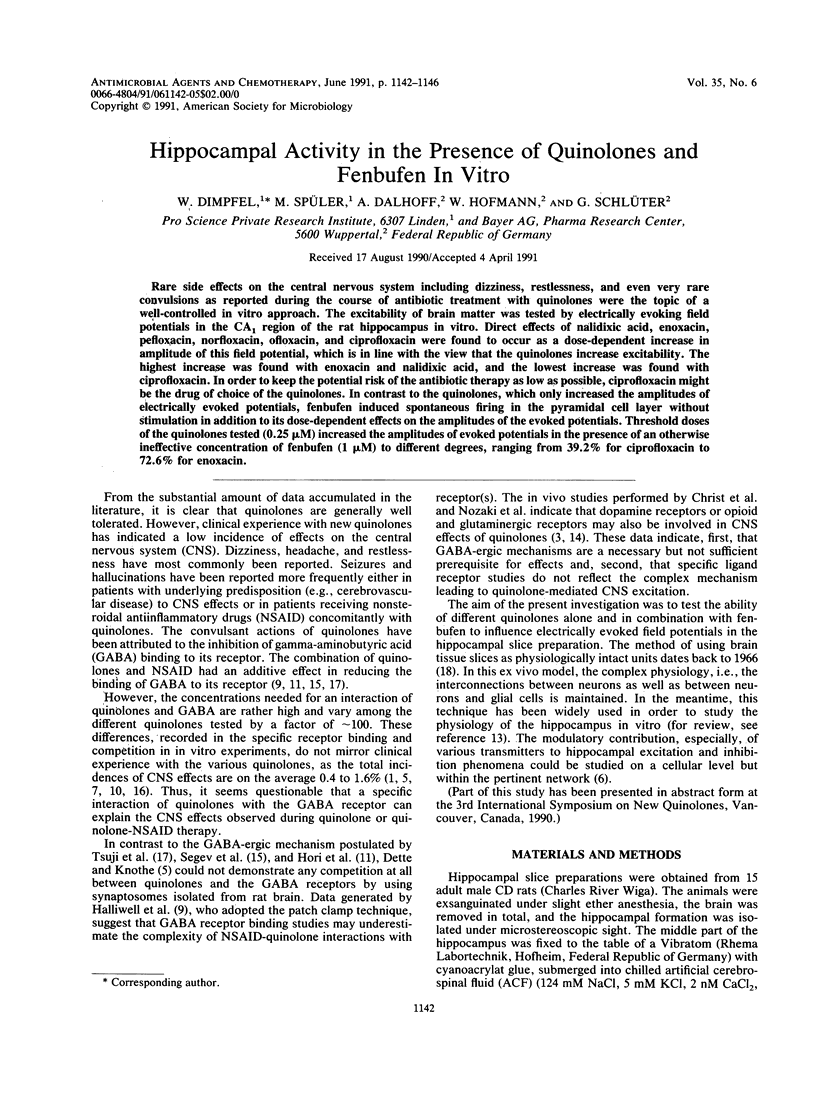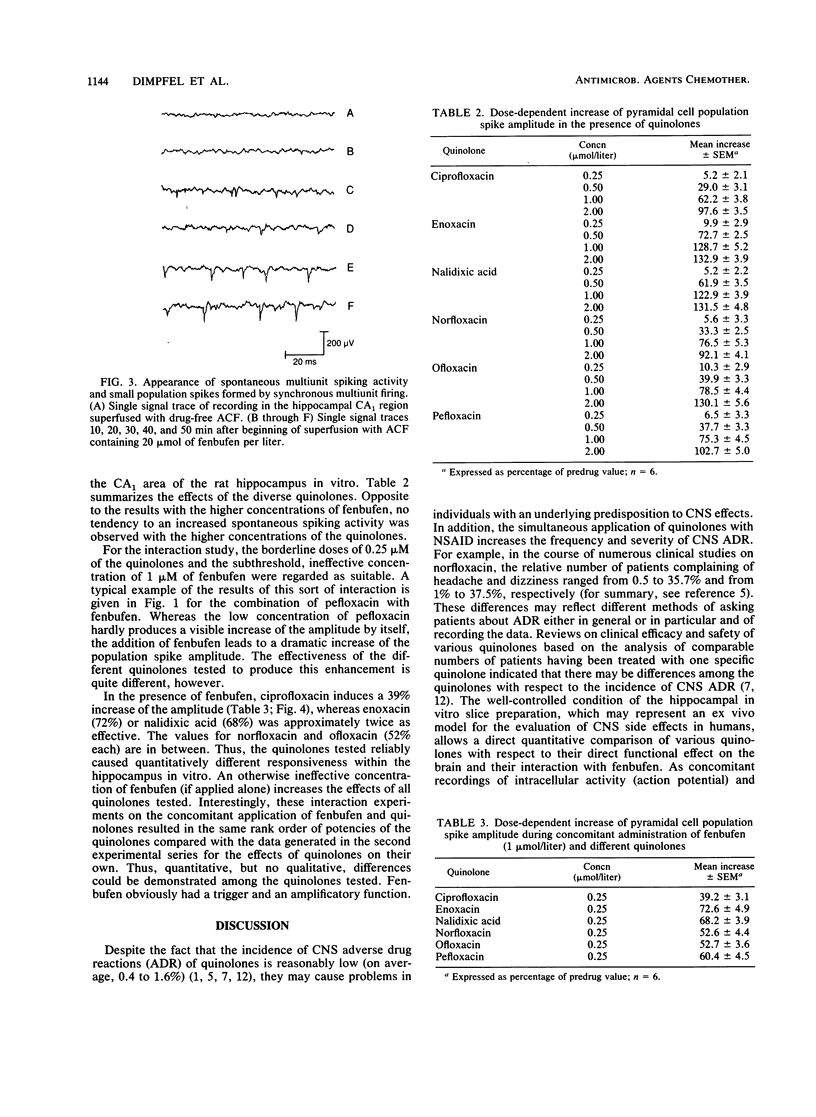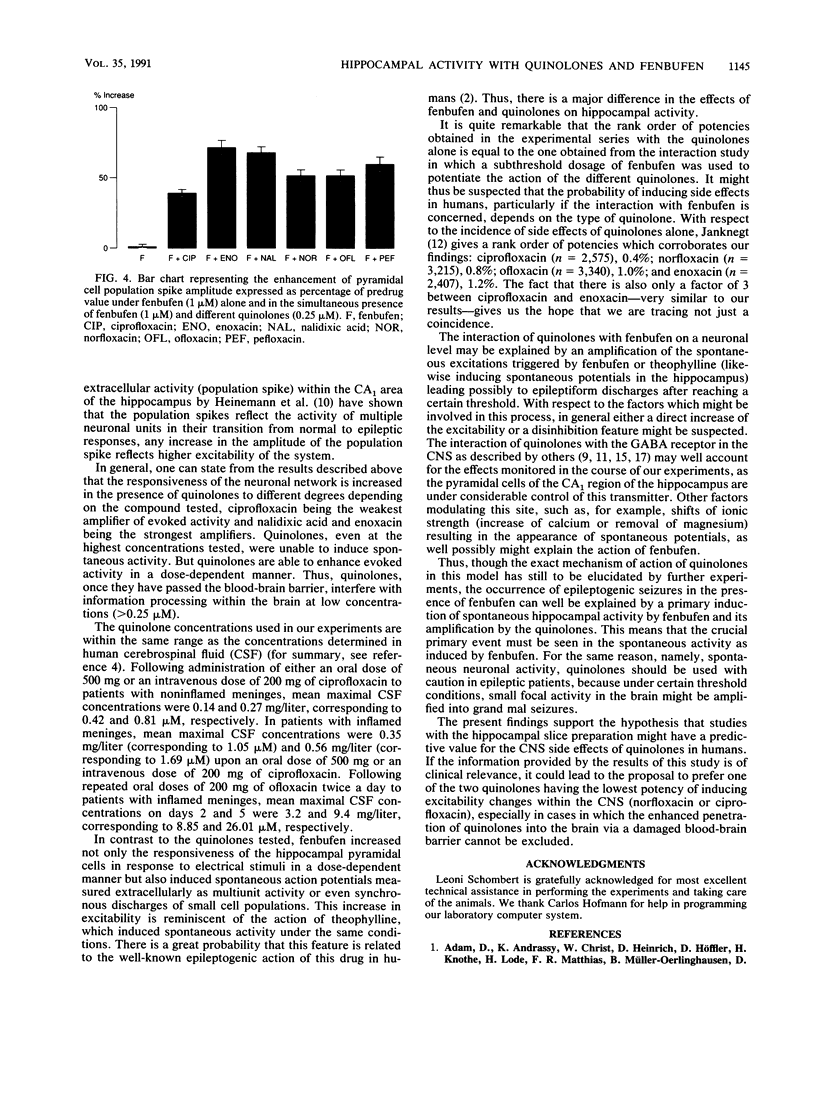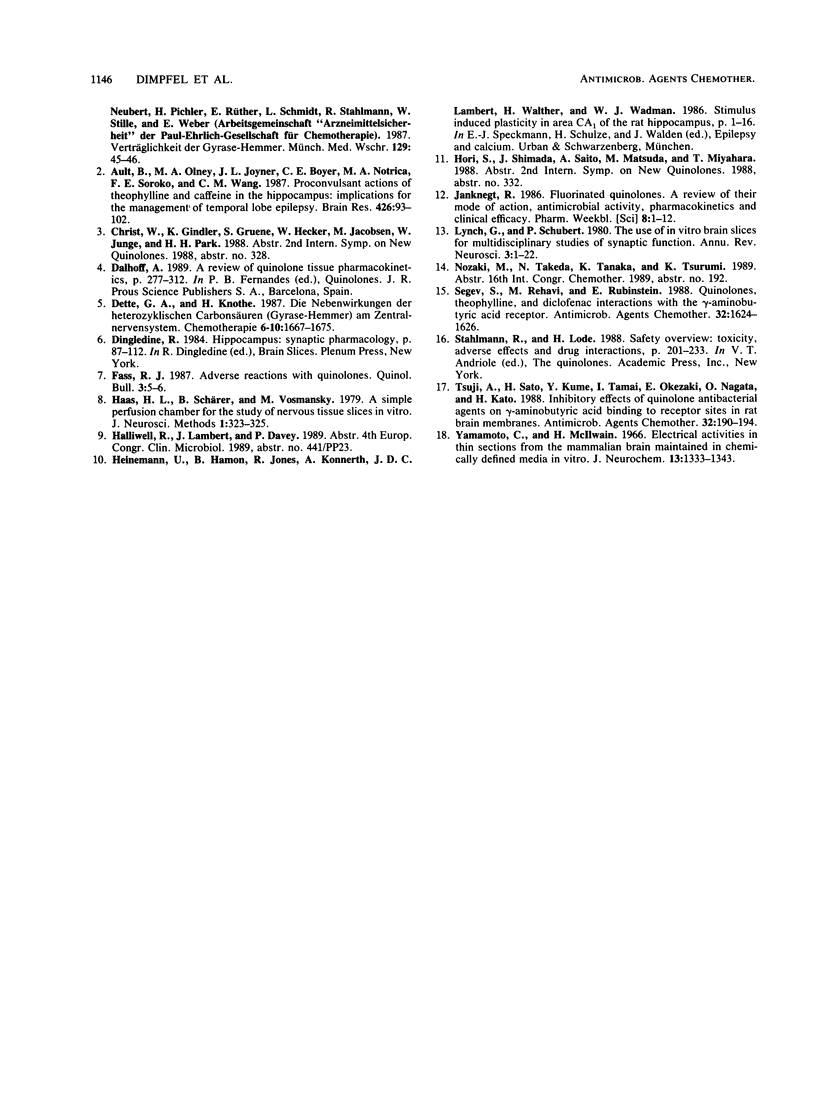Abstract
Rare side effects on the central nervous system including dizziness, restlessness, and even very rare convulsions as reported during the course of antibiotic treatment with quinolones were the topic of a well-controlled in vitro approach. The excitability of brain matter was tested by electrically evoking field potentials in the CA1 region of the rat hippocampus in vitro. Direct effects of nalidixic acid, enoxacin, pefloxacin, norfloxacin, ofloxacin, and ciprofloxacin were found to occur as a dose-dependent increase in amplitude of this field potential, which is in line with the view that the quinolones increase excitability. The highest increase was found with enoxacin and nalidixic acid, and the lowest increase was found with ciprofloxacin. In order to keep the potential risk of the antibiotic therapy as low as possible, ciprofloxacin might be the drug of choice of the quinolones. In contrast to the quinolones, which only increased the amplitudes of electrically evoked potentials, fenbufen induced spontaneous firing in the pyramidal cell layer without stimulation in addition to its dose-dependent effects on the amplitudes of the evoked potentials. Threshold doses of the quinolones tested (0.25 microM) increased the amplitudes of evoked potentials in the presence of an otherwise ineffective concentration of fenbufen (1 microM) to different degrees, ranging from 39.2% for ciprofloxacin to 72.6% for enoxacin.
Full text
PDF




Selected References
These references are in PubMed. This may not be the complete list of references from this article.
- Ault B., Olney M. A., Joyner J. L., Boyer C. E., Notrica M. A., Soroko F. E., Wang C. M. Pro-convulsant actions of theophylline and caffeine in the hippocampus: implications for the management of temporal lobe epilepsy. Brain Res. 1987 Nov 17;426(1):93–102. doi: 10.1016/0006-8993(87)90428-8. [DOI] [PubMed] [Google Scholar]
- Haas H. L., Schaerer B., Vosmansky M. A simple perfusion chamber for the study of nervous tissue slices in vitro. J Neurosci Methods. 1979 Dec;1(4):323–325. doi: 10.1016/0165-0270(79)90021-9. [DOI] [PubMed] [Google Scholar]
- Lynch G., Schubert P. The use of in vitro brain slices for multidisciplinary studies of synaptic function. Annu Rev Neurosci. 1980;3:1–22. doi: 10.1146/annurev.ne.03.030180.000245. [DOI] [PubMed] [Google Scholar]
- Segev S., Rehavi M., Rubinstein E. Quinolones, theophylline, and diclofenac interactions with the gamma-aminobutyric acid receptor. Antimicrob Agents Chemother. 1988 Nov;32(11):1624–1626. doi: 10.1128/aac.32.11.1624. [DOI] [PMC free article] [PubMed] [Google Scholar]
- Tsuji A., Sato H., Kume Y., Tamai I., Okezaki E., Nagata O., Kato H. Inhibitory effects of quinolone antibacterial agents on gamma-aminobutyric acid binding to receptor sites in rat brain membranes. Antimicrob Agents Chemother. 1988 Feb;32(2):190–194. doi: 10.1128/aac.32.2.190. [DOI] [PMC free article] [PubMed] [Google Scholar]
- Yamamoto C., McIlwain H. Electrical activities in thin sections from the mammalian brain maintained in chemically-defined media in vitro. J Neurochem. 1966 Dec;13(12):1333–1343. doi: 10.1111/j.1471-4159.1966.tb04296.x. [DOI] [PubMed] [Google Scholar]


